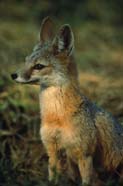
German and Swiss researchers have found that the social dynamics of bats are only revealed after analyzing large data sets. The researchers examined 20,500 individual observations collected over five years and found that female Bechstein’s bats have social networks as complex and long-lived as those in dolphins, elephants and some primate species.
Bechstein’s bats are a Myotis species (Myotis bechsteinii). They roost in trees and only rarely hibernate in caves. It is an uncommon bat with a patchy distribution throughout Europe, including the United Kingdom.
There’s a brief write-up in the AAAS ScienceShots. And here’s the paper, in the Proceedings of the Royal Academy B.
While the findings lean toward the academic, they offer insight for the study of White Nose Syndrome, and into just what you might discover after collecting 20,500 observations of an animal’s behavior.





